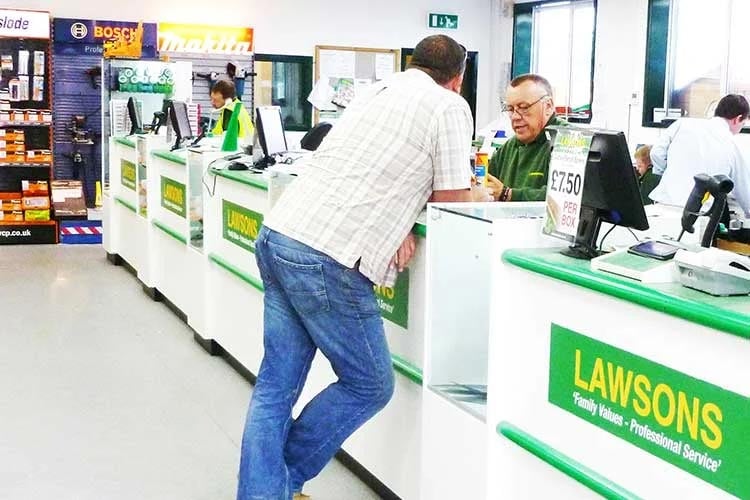Lawsons
A positive upgrade experience for Lawsons
Vertical: Distribution
Industry: Building & Timber Merchant
Product: K8 & Phocas

Site link: www.lawsons.co.uk
About Lawsons
The Lawsons Group operates 17 branches across London and the South East. The family-owned company specialises in the supply of building materials, timber and loft conversion products. Jeremy Norris, Commercial Director, has been with the group for 22 years.
"We strive to provide the best equipment we possibly can for our staff from the trucks they drive to the IT systems they use," Jeremy said.
Gains and benefits
K8 processes around 3,000 transactions each day for Lawsons and manages 8,000 customer accounts. The company was one of the earliest users of the software and switched to the system in 1999 when its previous provider couldn’t guarantee ‘year 2K’ compliance. The initial 40-user system has grown and there are now 190 K8 users across 17 sites. The IT team always upgrades to the latest version of the software as soon as it’s available.
I can’t understand why anyone wouldn’t upgrade. Firstly staff using the system have a level of expectation – they don’t want to work with green screens. Secondly there’s the business need. By upgrading we can always stay at the leading edge and make the most out of any new functionality.
Jeremy Norris - Commercial Director at Lawsons
"The latest version of K8 lets us produce management accounts with critical information - such as how much profit we’re making at each branch on a daily basis - in the fastest way possible," Jeremy explained.
The last K8 upgrade also delivered two key features for Jeremy. The first is PCI (Payment Card Industry) compliant chip and pin integration that will replace non-integrated PDQ machines. All card transactions can be processed directly in K8 using PODS that read the cards - leading to tighter security of transactions, fewer typing errors and quicker authorisations from the banks.
Another feature is K8’s new transport delivery management system which will deliver significant improvements in the operation of Lawsons’s fleet.
"With two-thirds of our £80M business turnover being delivered, we generate a lot of paperwork with the potential for mistakes," Jeremey explained. "Our drivers will now be able to capture customer signatures on a handheld device and make any adjustments pertaining to the materials delivered, cutting out the paperwork and updating the system instantly with the correct details."
K8 is delivered to Lawsons via the Cloud and a further driver to upgrade was the ability to take advantage of Oracle Dataguard. This product enables ‘Real-Time Data Replication’ over two K Cloud servers and, in the rare event of a primary server outage, a secondary server can be failed over to in a matter of minutes.
Regular upgrades are not just about cost and time saving according to Jeremy. "Yes, we’ll probably reduce bank costs a bit through the new chip and pin facility, but upgrading is more about making the business more efficient and being slicker."
"Kerridge Commercial Systems appointed a good project manager for us who clearly wanted to get it right. He set up a test system beforehand to allow users in each role to carry out a day’s work on the new version."
Apart from some training for back office staff on some new features there were very little changes for trading staff or customers. The whole process went very smoothly. We handed the old system over on Saturday lunchtime and Kerridge Commercial Systems delivered the upgraded version on Sunday. The whole experience was simple, painless and positive.
Jeremy Norris - Commercial Director at Lawsons
Jeremy expressed, "Some people think when they buy a system, that’s it. But you need to keep it refreshed or you can get so far away from where you should be. Even if you don’t use all of an upgrade’s functionality straight away, it’s there when you need it."
Highlights
- Faster production of critical business management information
- PCI-compliant chip and pin integration means tighter security, fewer typing errors and quicker authorisations from the banks
- Drivers’ handheld devices will cut out paperwork and minimise errors
- Oracle Dataguard will deliver ultimate data security for the 190-user system